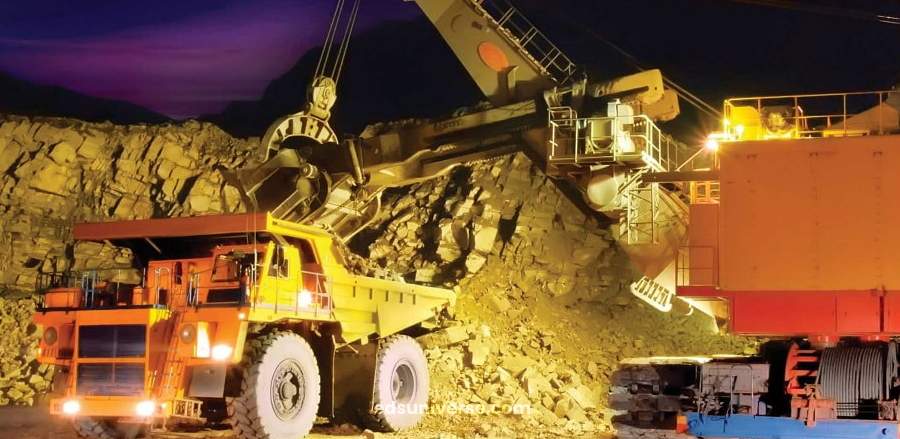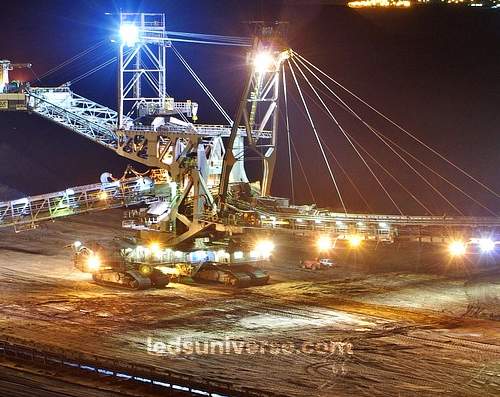With LEDs, miners benefit from superior illumination without the hazards of flammable gases, extended durability to withstand harsh environments, and a significant reduction in maintenance costs. Dive into the dynamic evolution of mining lighting and discover how modern advancements are shining a brighter, safer light on mining operations.
Mining is a challenging and dangerous profession, often undertaken in the harshest of environments. Historically, miners faced severe risks due to inadequate lighting solutions that could cause catastrophic accidents, health issues, and fatalities. The advent of advanced lighting technology has transformed mining operations, significantly improving safety and efficiency.
Reach out for free lighting consultation
Table of Contents
ToggleMining lighting has come a long way from the early days of open flames and rudimentary lamps. In the late 19th and early 20th centuries, miners used candles and oil wick lamps, which posed significant hazards. These open flames were susceptible to igniting methane gas, leading to dangerous explosions. The introduction of carbide lamps was a notable advancement, but these too had their drawbacks, including issues with maintenance and the risk of fire.
The breakthrough came with the development of LED mining lights. Unlike their predecessors, LED lights do not use open flames and therefore eliminate the risk of explosions caused by methane. This advancement has not only enhanced safety but also addressed long-term health concerns associated with earlier lighting technologies.

The safety benefits of LED mining lights are transformative compared to traditional lighting methods. Historical mining lights, such as those with open flames or incandescent bulbs, were susceptible to malfunctions that could ignite methane gas, leading to catastrophic explosions. LED mining lights, on the other hand, use solid-state technology, which eliminates the risk of ignition. This is particularly crucial in underground mines where methane and other flammable gases are common.
LED lights operate at much lower temperatures than their predecessors, significantly reducing the risk of fire hazards. They generate minimal heat during operation, which helps to prevent accidental ignition of combustible materials in the mining environment. Additionally, LEDs are highly resistant to vibration and shock, further enhancing safety by minimizing the risk of light fixture failure that could contribute to hazardous conditions.
Mining environments present some of the most challenging conditions for lighting systems, including extreme temperatures, high humidity, and exposure to abrasive dust. LED mining lights are specifically engineered to handle these harsh conditions. They are often constructed with rugged, industrial-grade materials designed to resist damage from dust, water, and physical impacts.
The durability of LED mining lights extends their operational life and reliability in demanding conditions. Many LED mining lights come with protective housings that meet strict standards for dust-proofing and water resistance, ensuring they remain functional even in the most extreme environments. This robustness translates to fewer replacements and repairs, making LED lights a dependable choice for continuous operation in mining settings.
Traditional lighting options, such as incandescent and halogen lamps, have shorter lifespans and higher maintenance costs. LEDs, in contrast, offer an impressive average lifespan of around 80,000 hours, which means they require less frequent replacements. This extended lifespan reduces the overall cost of ownership by minimizing the need for purchasing new lamps and performing maintenance.
Moreover, LED mining lights are more energy-efficient than traditional lighting technologies. They consume less power while delivering the same or better illumination, which translates to lower energy bills. The combination of longer life and reduced energy consumption makes LEDs a cost-effective solution for mining operations, helping to lower operational expenses and improve the bottom line.
The quality of illumination provided by LED mining lights represents a significant advancement over older lighting technologies. LEDs are known for their ability to produce bright, uniform light that reduces shadows and glare, enhancing visibility in the often-dark and confined spaces of mines. This uniform lighting helps to prevent accidents and improves overall safety by providing clear visibility of the work environment.
Advanced optical designs in LED mining lights ensure that light is distributed evenly across the area, which helps to reduce eye strain and fatigue among miners. High-quality LED lights also offer superior color rendering, allowing miners to see details more clearly and accurately. This improved illumination not only enhances safety but also contributes to increased productivity by enabling miners to work more efficiently in well-lit conditions.

Traditional lighting technologies, such as incandescent and halogen lamps, are known for their inefficiency. Incandescent bulbs, for instance, are notorious for their high energy consumption and low light output relative to the power they consume. A significant portion of the energy is wasted as heat rather than light, contributing to higher energy consumption and increased carbon emissions. This inefficiency necessitates more frequent replacements, which further contributes to environmental degradation through waste and resource depletion.
Halogen lamps, while slightly more efficient than incandescent bulbs, still fall short in terms of energy conservation and lifespan. Their shorter operational life means that they need to be replaced more frequently, leading to greater waste and higher production demands for replacement bulbs. Additionally, the disposal of these traditional lighting solutions often involves hazardous materials, which can contribute to environmental pollution if not managed properly.
LEDs are highly energy-efficient, converting a larger portion of electrical energy into visible light and producing minimal heat. This efficiency not only reduces energy consumption but also lowers greenhouse gas emissions associated with power generation. LEDs also have a much longer lifespan, often exceeding 80,000 hours, which means they need to be replaced far less frequently than traditional bulbs. This extended life reduces the overall waste generated and minimizes the environmental footprint of lighting operations. Moreover, LEDs do not contain hazardous materials like mercury, which is commonly found in some traditional lighting solutions, making them a safer choice for both the environment and human health.
Mining environments present some of the most demanding conditions for lighting equipment. Exposure to dust, moisture, and physical impacts requires lighting solutions that are robust and reliable. Traditional lighting options often struggle to meet these demands, leading to frequent failures and maintenance challenges.
LED mining lights are specifically designed to address the durability issues associated with harsh mining environments. They are built with rugged, industrial-grade materials that provide exceptional protection against dust and moisture. Many LED mining lights feature sealed housings with advanced gaskets and protective coatings that prevent dust and water from infiltrating the light fixtures. This dust-proof and waterproof design ensures that the lights continue to operate effectively even in extreme conditions, reducing the likelihood of malfunctions and extending their operational life.
In addition to their protection against environmental elements, LED mining lights are engineered to withstand physical impacts. Unlike traditional incandescent or halogen lamps, which can be fragile and prone to breakage, LEDs are solid-state devices with no moving parts or glass components. This construction makes them highly resistant to vibration and shock, which is crucial in the rugged and dynamic environment of a mine. The impact-resistant nature of LEDs minimizes the risk of damage during handling and operation, ensuring that the lights remain functional and reliable over time.
The durability of LED mining lights also translates into reduced maintenance needs. Because they are designed to withstand the harsh conditions of mining operations, they require less frequent repairs and replacements compared to traditional lighting solutions. This reliability not only improves operational efficiency but also reduces the total cost of ownership by minimizing downtime and maintenance expenses.
LEDs provide a safer, more durable, and environmentally friendly lighting solution compared to their predecessors. As mining continues to evolve, the integration of advanced lighting technologies will remain a crucial factor in ensuring the safety and productivity of mining operations.